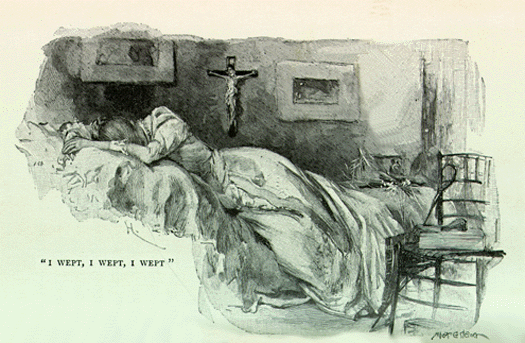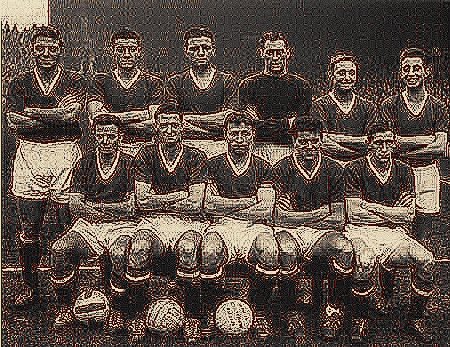It is, by all accounts, lovely and elegant and varnished, the coffin in which I shall rot, in time to come. I chose it, in a whimsical mood, from a photographic brochure, at the coffin-maker’s workshop which I had entered distractedly, mistaking it for the pie ‘n’ pastry shop. I cannot claim this was a simple error to which any humdrum jackanape might be prone, for not only are the exteriors of the coffin-maker’s and the pie ‘n’ pastry shop radically distinct from one another, but they lie in completely different parts of town, the one at the eastern edge and the other slotted in a parade in the precinct to the south-west. It could with justice be said I was “not all there” that morning. I could blame my paramour or the postie or the weather, but to do so, in any of those cases, would be churlish and incontinent. Well, perhaps the weather. Hailstones pinging down in June? Who’d have thought it? My equanimity was disturbed, as, it seems, were the readings on my compass, for there I was, to the east rather than the south-west, and all beflummoxed, so.
There were several coffin-makers busy in the workshop, most of them engaged in sawing and hammering and sanding and planing and hewing and chiselling. One was sat at a desk, writing a tract denouncing cremations and ashes and urns. I have since read it, thoroughly, and it makes a convincing argument without betraying the base personal motives of its author. It was this chap who, looking up from his scribbling, introduced himself to me and asked me what it was I wanted. He gave his name as Ned the Coffin-Maker. In spite of my befuddlement, I had already realised I was not in the pie ‘n’ pastry shop, so I managed not to make a fool of myself. But I was rather tongue-tied, and all I managed to say in reply was “Hello there, Ned”.
There followed a confusing five minutes where Ned the Coffin-Maker mistook me for a long lost pal of his, who had run away to sea, or possibly to join a circus, many years before. Apparently, I looked startlingly similar to this fled companion, at least to how Ned imagined he might look after the passage of so many years, grayer and stooped and bewrinkled and riddled with liver spots. He assumed the bunch of chrysanthemums I was carrying was a gift for him, snatched it from me, and plunged it into a jug full of water. When we eventually escaped from our muddle, with the realisation that I was not after all his pal, I felt too embarrassed to ask for my flowers back and, indeed, Ned the Coffin-Maker made no offer to return them to me.
I was poised to leave the workshop there and then. That is to say, I had manoeuvred my body so that my toes and nose were pointed in the direction of the doorway, my left arm was outflung to sweep me fully around without my overbalancing, which is always a risk with me, quite honestly, and I was in the process of shifting my glance away from Ned the Coffin-Maker’s characterful and strangely enormous head. But then he piped up, waving his pictorial brochure at me as he did so.
“Your death is horribly inevitable. It is best to be prepared.”
I re-poised myself, facing him squarely on.
“You would be wise,” he continued, “To leaf through this pictorial brochure of coffins, and pick out the one you will want when the dread day occurs, as fate decrees it must.”
I heard a bell clang, then, but whether it was a real bell or a fancied clanging inside my head I did not know. But I felt impelled to sit down at Ned the Coffin-Maker’s desk, and while he set about chivvying along his colleagues, or underlings, I pored over hundreds of pages of colour photographs of coffins. Some were shabby, some garish. Most were wooden, but a few seemed made of tin or zinc or wolfram. Their shapes and sizes did not vary by much, and each coffin had been photographed in front of an identical map of Switzerland, tacked upon a baize-covered board, to give a consistent sense of scale. There were many, many pins stuck in the map, one for each graveyard in the whole of Switzerland. The coffins were named, rather than numbered, according to captions hand-written beneath them. I rejected out of hand The Dismal, The Alarming, and The Frankly Unspeakable, For Paupers. I dallied over The Penge Flask, The Egon Schiele, and The Stubby. But as soon as my eyes lit upon The Lovely And Elegant And Varnished, I knew it was the coffin for me. I slammed shut the brochure and called to Ned, who came lurching over to me, having donned a black cape like a shroud.
“An excellent choice, if I may say so,” he said when I told him my choice. His voice was newly sepulchral, as if he spoke from a deep dank grim and fetid grave. He explained that he would make all necessary arrangements when the time came, and for me not to worry my ditzy little head about anything, forevermore. I could have taken umbrage at “ditzy”, and smashed my fist into his gob, but I reflected that, after all, the only reason I was in the workshop at all was my earlier befuddlement.
I said my farewells, and thought I heard mischievous chuckling from the other coffin-makers as I stepped out the door. I threw my compass into a hedgerow and, instead of heading home, I decided to run away to sea, or to join a circus. I would see which I came to first, the booming ocean, or the Big Top.


